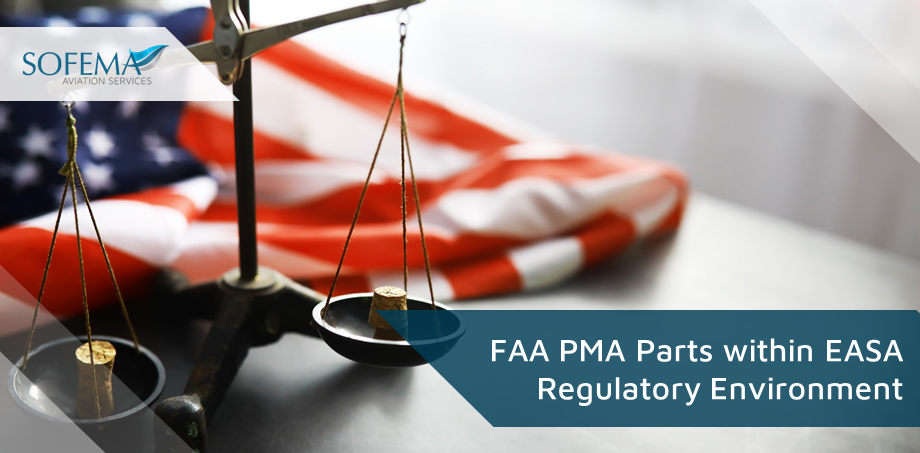Sofema Aviation Services (SAS) www.sassofia.com reviews the Technical Implementation Procedures (TIP) For Airworthiness and Environmental Certification, Between the Federal Aviation Administration of the United States of America (FAA) and the European Union Aviation Safety Agency (EASA) Revision 7 (Effective November 18, 2023), concerning FAA PMA Parts within EASA Regulatory Environment IAW TIP.
Introduction – Parts Manufacturing Authority (PMA)
A PMA part is manufactured by a company with the approval of the Federal Aviation Administration (FAA).
- The FAA PMA designation demonstrates the company’s authorisation to produce aircraft parts that meet industry standards.
- PMA Certification means the product has received adequate testing that meets FAA standards for airworthiness.
- It also ensures the parts have been manufactured according to approved procedures from the FAA.
To meet FAA PMA approval standards, companies must meet combined design and production criteria. These businesses follow a rigorous approval procedure involving an application, risk assessment, engineering tests, verification of installation usability and several other steps to complete the process.
During the design approval stage, a PMA company must demonstrate that their modification or replacement part meets specific standards for that part from the FAA. The FAA will review the part design to determine if it meets regulatory requirements at a quality equal to or better than the original.
Once the design is approved, it certifies the part modification meets airworthiness standards for eligible products without infringing on the OEM’s patent.
The certification process follows these criteria:
- Title 4 of the code of federal regulations
- AC 43-18, Fabrication Manufacturer Approval Procedures
- Order 8110.42, Parts Manufacturer Approval Procedures
EASA Acceptance of FAA PMA Parts
EASA shall directly accept all FAA PMA approvals, without further showing, for modification and/ or replacement parts for installation on products certified or validated by EASA in the following cases:
- The PMA part is not a “critical component”.
Note – A part identified as critical by the design approval holder (DAH) during the product certification process or otherwise by the Authority for the State of Design (SoD). Typically, such components include parts for which a replacement time, inspection interval, or related procedure is specified in the Airworthiness Limitations section or certification maintenance requirements of the manufacturer’s maintenance manual or Instructions for Continued Airworthiness.
- and the PMA design was approved via:
o (a) Identicality without a licensing agreement per 14 CFR section 21.303; or
o (b) Test reports and computations per 14 CFR section 21.303.
- The PMA part conforms to design data obtained under a licensing agreement from the TC or STC holder according to 14 CFR section 21.303 and the TC or STC has been validated by EASA.
- The PMA part is a “critical component” and the PMA design was approved via:
o (a) An FAA-issued STC and EASA has validated the STC; or
o (b) Identicality without a licensing agreement per 14 CFR section 21.303 and EASA has issued an equivalent STC; or
o (c) Test reports and computations per 14 CFR section 21.303 and EASA has issued an equivalent STC.
Next Steps
Follow this link to our Library to find & Download related documents for Free.
Sofema Aviation Services www.sassofia.com & Sofema Online www.sofemaonline.com provide EASA & FAA Compliant Regulatory Training – Please see the websites or email team@sassofia.com
Tags:
Airworthiness, EASA, EASA & FAA Compliant Regulatory Training, EASA Regulatory Environment, Environmental Certification, FAA (Federal Aviation Administration), FAA PMA Parts, Fabrication Manufacturer Approval Procedures, IAW TIP, Parts Manufacturer Approval Procedures, Parts Manufacturing Authority (PMA), SAS blogs, STC holder




